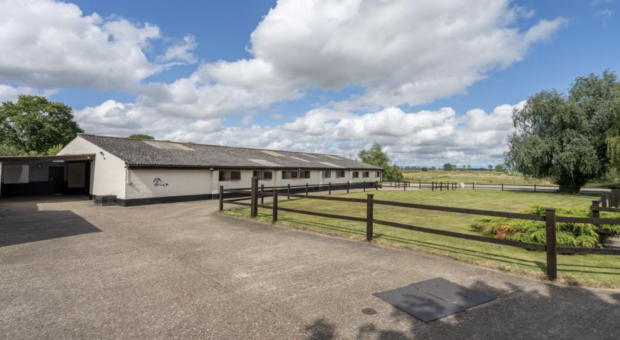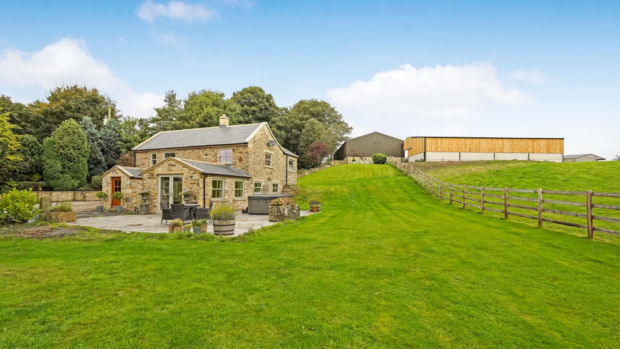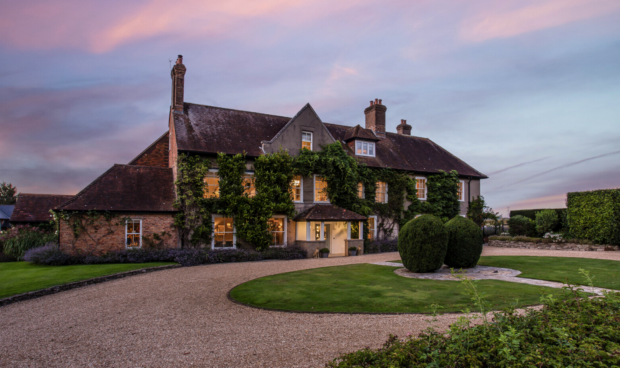Looking for an equestrian property? Check out the H&H property database >>
The equestrian property market is storming on faster than Zara Phillips cross-country. It is so busy that even some estate agents, such as Diana Rowell and George Andrews of Churchill Country & Equestrian, are struggling to find a property.
“We are looking to buy a nice family house with an annex in a rural but accessible position, with some good hacking, at least seven acres and a tidy yard,” says Rowell. “And we are having great difficulty finding this gem.”
Demand has spiked in 2006 and consistently outstrips supply, particularly for the type of good family home that Rowell, Andrews and hundreds of other buyers are after.
“Since March this year, except for a lull during holiday time, the market has been very strong,” says rural and equestrian agent Jon Drew-Smythe. “Now the children are back at school, it has taken off again.”
This has partly been driven by the return of “positive vibes and an air of optimism” among the British, as Drew-Smythe puts it, and partly by the energetic pound-flexing of City and south-east buyers.
“We have a large proportion of buyers coming out of London wishing to take up a new lifestyle,” says David Rumsey of Pelhams. “They can move faster than those who have land.”
Even the mid-summer rise in interest rates has failed to dampen buyers’ enthusiasm.
“Certainly most purchasers have now factored in the higher cost of borrowing and do not seem unduly perturbed by this, or, for that matter, the prospect of a further slight increase in base rate,” says Neil Gladwin of Humberts Rural and Equestrian division. “These are seen by those considering a purchase as necessary in the short-term to secure stability in the longer-term.”
Sellers, by contrast, are staying put, leading agents throughout the country to complain — in the words of Drew-Smythe — about “a distinct shortage of equestrian instructions”.
This can potentially kick off a cycle where fewer and fewer homes become available for sale.
“With a limited supply in the market, vendors are worried about whether there are suitable premises for them to buy,” says Gladwin. “They don’t want to be left homeless or, worse, stable-less.”
As a result, any well-presented house with a stable yard and at least five acres could sell several times over, especially if it comes with a manège.
“The market is starved of land across the board, and properties with equestrian facilities seem few and far between,” says Richard Binning of Savills.
As riders also face stiff competition for acres from lifestyle buyers, this is bringing waiting lists up to 12 months or more.
“Some buyers have been looking for specific properties for more than a year,” says James Baker of Strutt & Parker’s Estates and Farm Agency department. “The longest is around two years, where an applicant is looking for a property to train racehorses.”
Despite this imbalance between supply and demand, prices remain sensible. All agents confirm that buyers are prudent and shrewd, and are no longer prepared to blow their budgets on just about anything, as happened in the heady days of 2000. For starters, they have become far more choosy.
“Buyers are penalising anything that is poorly presented,” according to Richard Nocton of Woolley & Wallis.
And while houses with land are selling well — even those with unusually high acreage — few people will consider “properties that do not have enough land to go with the facilities being offered, or that do not have any land at all”, as Pelhams’ Rumsey reports. “Properties where it is hard to reach off-road riding without ‘boxing up’ the horses can also be hard to sell,” he adds.
Stuart Paton of Humberts in Grantham agrees: “The equestrian market in the East Midlands appears strong, particularly for properties near to major conurbations that provide safe, varied and easily accessible riding. But properties with poor facilities [low quality stables, bad fencing] in remote areas are more difficult to sell.”
These days, buyers also have better access to market information, and are not afraid to use it.
“We deal with educated buyers, who are quite capable of looking on websites for comparable properties,” says Rowell. “It is rare for a buyer to pay too much.”
Or, in the words of Zoe Napier of Fenn Wright, “over optimistic vendors will not see over optimistic buyers”.
This is why correct pricing is key to selling, according to Strutt & Parker’s Baker: “This remains a buyer’s market, where realistic pricing is integral to a successful sale.”
Unsurprisingly, however, the definition of the “correct price” vastly differs between buyers and sellers.
“The press is reporting increases in property values, but they are taking evidence from town house sales, which are not relevant to the country market,” says Churchill’s Rowell. “My advice would be to talk to the expert — the agent — and take on board what he or she says.”
As a guide, she advises that applicants in Sussex, Surrey and Hampshire should expect to pay £550,000-£650,000 for a three-bedroom home with three stables and five acres. This can rise to £1.75m-£2.25m for a five-bedroom house with a two-bedroom cottage, 15-box yard with good facilities, further barns and 50 acres.
“It is the location of the property, the quality and size of the house, the number of paddock acres, the secondary accommodation and a sizeable yard and comprehensive facilities that make all the difference to the value,” she says, adding that demand is especially strong for homes in the £850,000 to £1m bracket.
East of London, in East Anglia, a good four-bedroom equestrian family home with five to eight acres will cost £600,000-£750,000, according to Napier.
Over the border into Bedfordshire, equestrian homes fetch similar figures. Drew-Smythe, who covers Bedfordshire, Buckinghamshire and Oxfordshire, reports an average price of £750,000 for a five-bedroom home with five boxes, tack room and five acres.
In the ever-expensive Cotswolds and in Worcestershire, buyers are looking for houses with five to 15 acres in the £750,000 to £1m bracket, according to Tim Gaston of Humberts in Worcester.
He says: “An equestrian property with 9.9 acres and extensive stabling, marketed at £750,000, has just sold for well in excess of its guide price.”
Money goes slightly further in the West Country, where Baker puts the average price of a four-bedroom house with five stables and 20 acres around £700,000.
Looking ahead, agents throughout the country expect the good times to continue until November, before hitting the customary Christmas pause. And barring unexpected surprises when the buying season resumes next spring, next year could also hold as much promise for the equestrian property market as it does for Zara Phillips.
Looking for an equestrian property? Check out the H&H property database >>




